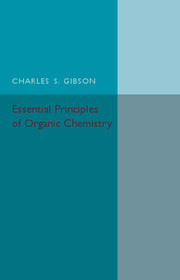Description
Essential Principles of Organic Chemistry
Author: Gibson Charles S.
Originally published in 1936, this textbook covers a wide variety of topics in the area of general chemistry and physics.
Language: English
Subject for Essential Principles of Organic Chemistry:
Publication date: 04-2016
Support: Print on demand
Support: Print on demand
Description
/li>Contents
/li>
Originally published in 1936, this informative and engaging textbook was primarily aimed at undergraduate students, who already held a familiarity with the elementary principles of general chemistry and physics. The book covers a wide variety of topics, with a particular emphasis on laboratory work and 'the practical side of the subject'. Chapter titles include, 'Aliphatic hydrocarbons', 'Aldehydes and ketones' and 'Amino acids'. Diagrams, a table of symbols, atomic numbers and atomic weights are included for reference. This book will be of considerable value to scholars of chemistry as well as to anyone with an interest in the history of education.
Preface; Introductory. Quadrivalency of carbon and deduction of types of carbon compounds; qualitative and quantitative analysis of organic compounds; determination of empirical and molecular formulae. The 'architecture' or constitution of the molecule; 1. Aliphatic hydrocarbons: paraffins, ethylenes (olefines), cycloparaffins, acetylenes and other unsaturated aliphatic hydrocarbons; 2. Aromatic hydrocarbons: benzene and its homologues. Aromatic derivatives of unsaturated hydrocarbons. Diphenyl, diphenylmethane, triphenylmethane, naphthalene, anthracene and phenanthrene; 3. Monohydroxy-derivatives of hydrocarbons: alcohols and certain derivatives; 4. Hydroxy-derivatives of cyclic hydrocarbons: phenols and certain derivatives; 5. Ethers; 6. Aldehydes and ketones and certain derivatives; 7. Simple monobasic acids: acid chlorides, acid anhydrides, amides and esters; 8. Homologues of acetic acid. Monobasic unsaturated acids and some derivatives; 9. Aromatic acids and some derivatives; 10. Organic bases: aliphatic amines and some derivatives; aromatic amines and some derivatives; heterocyclic bases and some derivatives; 11. Amino acids: x-amino acids and their derivatives; peptides. Aromatic amino acids. Indigo; 12. Stereoisomerism and optical activity; 13. Glycols (dihydric alcohols) and some derivatives; malonic and acetoacetic acid and some derivatives; 14. Glycerol and some derivatives. The erythritols and tartaric acids: hemihedrism and enantiomorphism; resolution of racemic acid; 15. n-pentitols and pentoses. n-hexitols and hexoses or monosaccharides: glycosides, disaccharides and polysaccharides. Estimation of reducing sugars. Fermentation of hexoses; 16. Derivatives of carbonic acid. Urea and certain derivatives; ureides; guanidine and certain derivatives; purines; 17. Organo-metallic compounds: syntheses by means of zinc alkyls and magnesium alkyl and aryl halides; Appendix. Isolation and purification of organic compounds; identification and determination of physical constants of organic compounds; typical apparatus used in the preparation and isolation of organic compounds; Table of symbols, atomic numbers and atomic weights; References; Index.
© 2024 LAVOISIER S.A.S.




